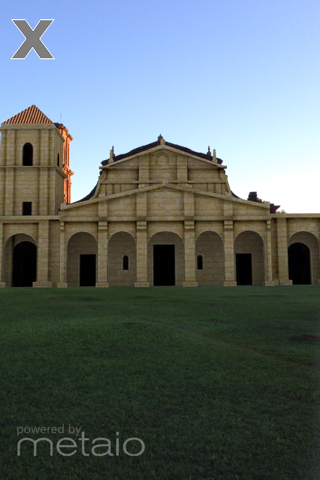
Museu Sem Paredes | São Miguel das Missões 2
Must museums have rooms and walls? From this question came the concept of “Museum Without Walls”, a model for landmark areas. The museum exists entirely in the digital realm, and is experienced only on site. It’s an app for tablets and smartphones that utilizes augmented reality to allow for an immersive exploration of tangible and intangible heritage without any physical interventions.
This project was initially developed as part of the author’s master’s thesis at NYU’s Interactive Telecommunications Program. The main technology used is called augmented reality - it superimposes computer-generated information, whether they are images, videos, audio files, three dimensional models or tactile sensations on top of the view of the camera. Essentially, it allows the user to see the “real world” in their screen with the computer generated content on top of it. The technology is attached to the context: the three dimensional models only appear when the 3D map of the area is recognized through the camera. So the application will only deliver content when in São Miguel das Missões only, serving as an aid and not an alternative to a visit to the actual site. Version 2 contains an added functionality - a map with touristic information to help you navigate the city. It’s not necessary to have an Internet connection for it to work – you only need it to download from the AppStore and access the directions to the site. Have fun!
CREDITS
Concept, research, interviews, iOS programming, design: Karolina Ziulkoski, Bolota
3D models: Melon 3D
Audio scripts: Dulphe Pinheiro Machado, Bolota
Audio production: Bruno Alcalde
Voices in English: Ruibo Qian, Seth Michael Carlson, Alex Luke, Stephen Hudson, Bruno Alcalde, Jason Scott Rosen.
Voices in Portuguese: Karolina Ziulkoski, Dulphe Pinheiro Machado, Henrique Mombach, José Mariano Bersch, Dulphe Pinheiro Machado Neto, Bruno Alcalde.
ACKNOWLEGDMENTS
A special thanks to everyone who gave some of their time to help with the project, especially the interviewees: Carlos Machado, Emílio, José Roberto de Oliveira, Cláudio Reinke and Mário Simon; to professor Nadir Damiani, for its great collaboration in the research; and IPEDs team and Mário Nascimento for helping this project come to reality.



